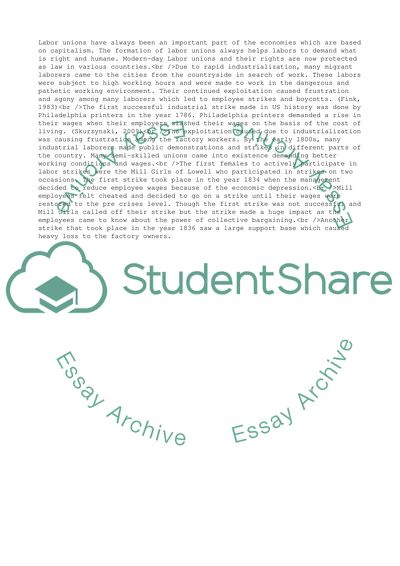Cite this document
(Labor Unions in Organizations-US History and Evolution of Labor Coursework Example | Topics and Well Written Essays - 2000 words, n.d.)
Labor Unions in Organizations-US History and Evolution of Labor Coursework Example | Topics and Well Written Essays - 2000 words. https://studentshare.org/business/1760416-labor-unions-in-organizations-us-history-and-evolution-of-labor-movement
Labor Unions in Organizations-US History and Evolution of Labor Coursework Example | Topics and Well Written Essays - 2000 words. https://studentshare.org/business/1760416-labor-unions-in-organizations-us-history-and-evolution-of-labor-movement
(Labor Unions in Organizations-US History and Evolution of Labor Coursework Example | Topics and Well Written Essays - 2000 Words)
Labor Unions in Organizations-US History and Evolution of Labor Coursework Example | Topics and Well Written Essays - 2000 Words. https://studentshare.org/business/1760416-labor-unions-in-organizations-us-history-and-evolution-of-labor-movement.
Labor Unions in Organizations-US History and Evolution of Labor Coursework Example | Topics and Well Written Essays - 2000 Words. https://studentshare.org/business/1760416-labor-unions-in-organizations-us-history-and-evolution-of-labor-movement.
“Labor Unions in Organizations-US History and Evolution of Labor Coursework Example | Topics and Well Written Essays - 2000 Words”. https://studentshare.org/business/1760416-labor-unions-in-organizations-us-history-and-evolution-of-labor-movement.


